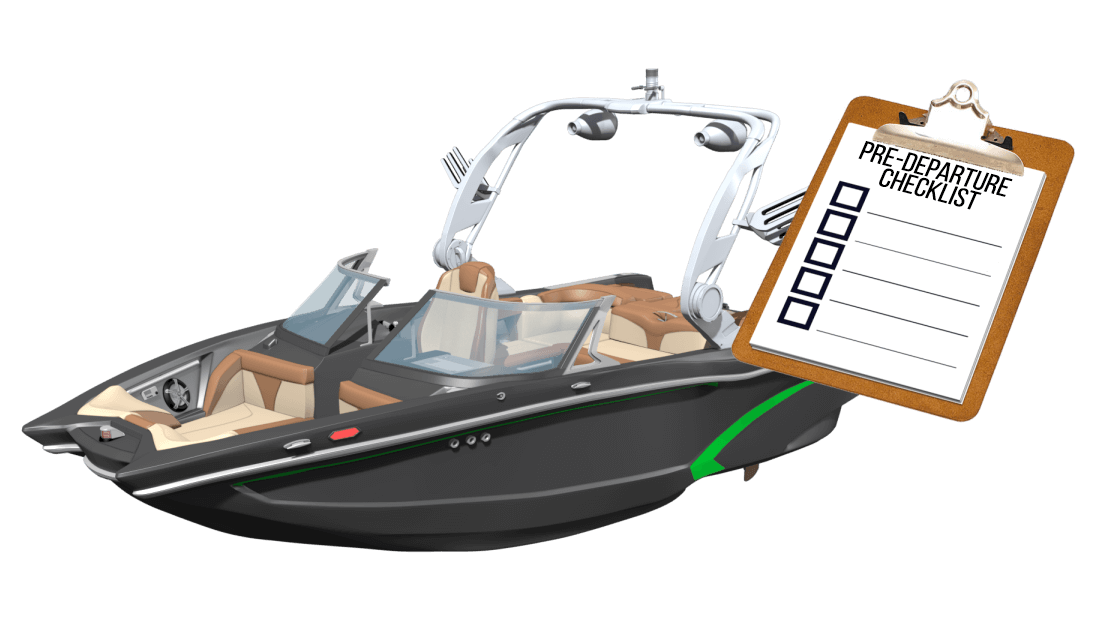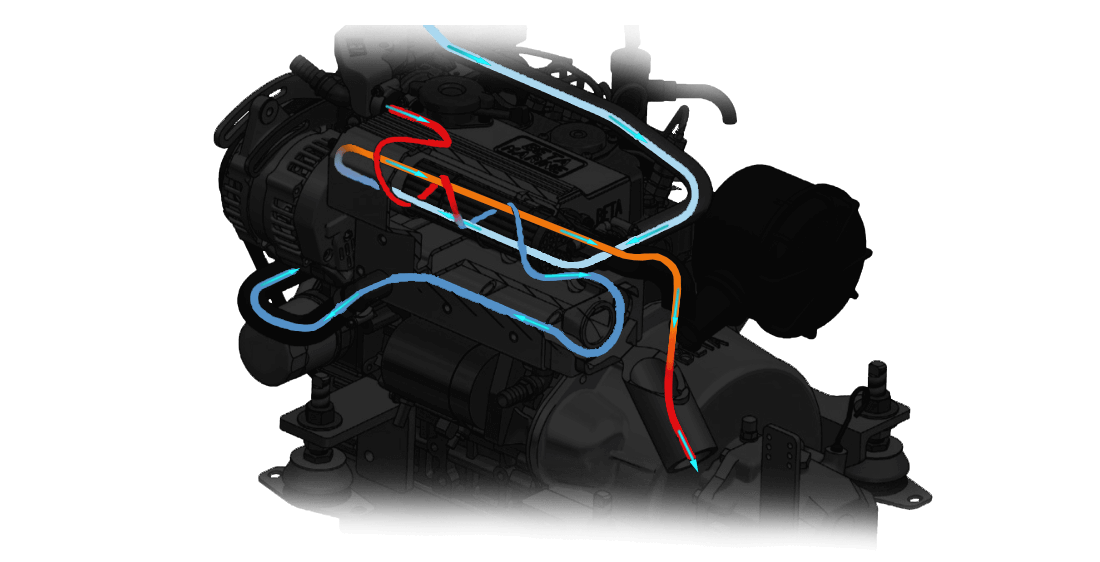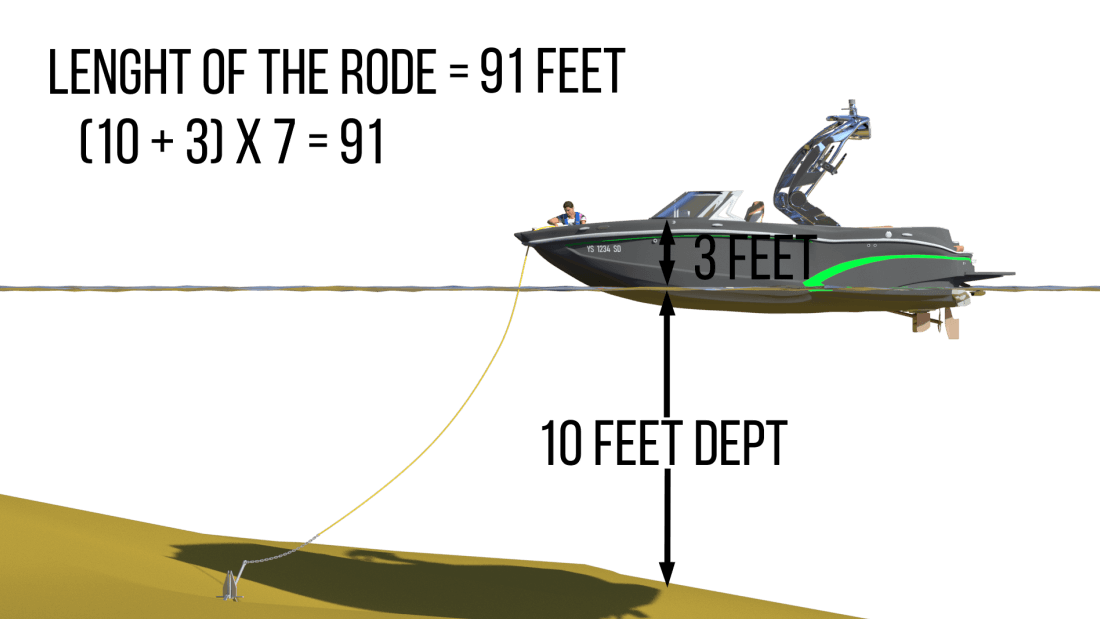Pre-Departure Checklist: What to Check Before You Leave the Dock
Every safe and enjoyable boating trip begins long before you cast off. A few minutes of preparation can prevent breakdowns, injuries, or worse. A pre-departure checklist is your roadmap for inspecting the boat, verifying safety gear, and ensuring that every person on board is ready for the voyage ahead.
Whether you’re operating a personal watercraft, a fishing boat, or a cabin cruiser, following a consistent checklist builds discipline and confidence. It also demonstrates the seamanship expected of a responsible skipper. Let’s explore what you should verify before leaving the dock.

1. Weather, Route, and Float Plan
Check the Weather
Begin with the big picture: conditions on the water.
-
Review official marine forecasts from Environment Canada, NOAA, or other reliable services.
-
Note wind direction, wave height, visibility, and thunderstorm warnings.
-
Use radar or weather apps for real-time updates.
If strong winds, fog, or electrical storms are forecast, postpone the trip. Remember: you can’t out-run a storm, but you can avoid it.
Plan Your Route
Plot your destination, fuel stops, and alternate harbors. Load your route into your GPS or chartplotter and cross-check with a paper chart in case of power loss. Identify hazards such as shoals, rocks, or low bridges.
File a Float Plan
Leave a short description of your trip with a family member, friend, or marina operator. Include:
-
Your departure and return times
-
Boat name, color, registration, and length
-
Names of all passengers
-
Planned route and emergency contacts
If something goes wrong, rescuers will have the details needed to locate you quickly.
2. Fuel, Oil, and Fluids
The saying “one-third out, one-third back, one-third in reserve” remains timeless. Always check:
-
Fuel level: Fill tanks completely and confirm vents are open.
-
Oil level: For four-stroke engines, check the dipstick; for two-strokes, confirm the oil reservoir is filled.
-
Cooling system: Inspect water intakes for obstructions and verify coolant if your engine is closed-loop.
-
Hydraulic fluids: Power steering and trim systems depend on proper fluid levels.
After fueling, run the blower for at least four minutes (or sniff for fumes if the boat lacks a blower). Never start the engine until the smell of gasoline is gone.
3. Electrical and Mechanical Systems
Batteries and Power
-
Verify that batteries are fully charged and terminals are clean.
-
Confirm that the selector switch (“1–2–Both–Off”) is set correctly for your system.
-
Test navigation lights, bilge pumps, and electronics.
Engine and Controls
-
Inspect belts, hoses, and clamps for cracks or leaks.
-
Start the engine briefly while still secured to the dock; listen for unusual noises.
-
Check throttle and steering for smooth operation in both directions.
-
Carry spare fuses, bulbs, and basic tools.
A small mechanical issue on land becomes a crisis on open water, so fix problems before leaving.

4. Safety Equipment
Your vessel must carry safety gear that meets Transport Canada or U.S. Coast Guard requirements for its length and type. Confirm that all items are present, accessible, and functional.
Life Jackets and PFDs
-
One approved life jacket or PFD per person.
-
Ensure correct sizes for children and adults.
-
Check zippers, straps, and buckles for wear.
-
Keep them in plain sight, not under seats.
Throwable Devices
-
Have at least one buoyant heaving line or cushion within reach.
-
Attach a floating rope to make retrieval easier.
Fire Extinguishers
-
Verify the gauge shows “charged.”
-
Inspect for rust, corrosion, or missing safety pins.
-
Mount extinguishers where they can be reached instantly, not inside locked lockers.
Sound and Visual Signals
-
Horn, whistle, or bell that meets minimum decibel standards.
-
Flares or distress signals (check expiration dates).
-
Waterproof flashlight and spare batteries.
-
Mirror or signal light for daytime emergencies.
First-Aid and Emergency Supplies
-
A stocked first-aid kit with seasickness medication, antiseptics, and gloves.
-
Emergency blankets, drinking water, and high-energy snacks.
-
Sharp knife or line cutter.
When equipment is easy to find, you save seconds — and seconds matter.
5. Navigation Tools
Even in the GPS age, redundancy is essential. Confirm you have:
-
Updated paper charts for your area.
-
Compass and knowledge of its use.
-
GPS/chartplotter with current map data.
-
Depth sounder for shallow waters.
-
Binoculars for spotting buoys or floating debris.
Mark danger areas or restricted zones before departure so you’re not forced to study charts when visibility drops.


6. Communication and Emergency Devices
Reliable communication is your lifeline.
-
VHF marine radio: Test Channel 16 and ensure volume/squelch settings work. Keep a laminated card with distress procedures nearby.
-
Cell phone: Fully charge and store in a waterproof case.
-
Portable power bank or extra radio battery.
-
Emergency Position Indicating Radio Beacon (EPIRB) or Personal Locator Beacon (PLB) if traveling offshore. Verify registration and battery expiry dates.
Know how to call MAYDAY: state vessel name, location, nature of emergency, and number of people aboard — then wait for instructions.
7. Anchors, Lines, and Fenders
Check your anchor setup:
-
Correct size and weight for your boat and conditions.
-
Adequate rode (chain plus rope) — a minimum of 7–10 times the expected depth.
-
Ensure it’s ready to deploy quickly.
Inspect dock lines for frays and confirm you have spares. Adjust fenders to protect the hull when docking or rafting up.
If you tow water-toys or dinghies, check tow lines for knots and chafing.

8. Drain Plugs and Bilge
One of the simplest yet most common mistakes is forgetting the drain plug. Always double-check it’s installed before launching.
Inspect the bilge area:
-
Make sure the pump runs automatically and manually.
-
Clean out debris that could block water flow.
-
Note any oil or fuel sheen, which may indicate a leak.
Carry an absorbent pad or spill kit to deal with small leaks immediately.
9. Passenger and Crew Briefing
Even if everyone aboard is family, take a minute to assign responsibilities and explain safety procedures.
Before Departure
-
Demonstrate where life jackets are and how to fasten them.
-
Point out the location of fire extinguishers, first-aid kit, and radio.
-
Explain how to stop the engine and use the anchor.
-
Review man-overboard procedures: shout “Person Overboard!”, keep eyes on the victim, throw flotation, and circle back slowly.
Encourage passengers to stay seated while underway, keep limbs inside the boat, and avoid distracting the operator.
A short briefing promotes calm, teamwork, and fast reaction if an emergency occurs.
10. Environmental and Legal Checks
Boating responsibly also means protecting the environment and following regulations.
-
Registration and license: Carry vessel registration and Pleasure Craft Operator Card (PCOC) or local equivalent.
-
Navigation lights: Confirm proper color and operation.
-
Ventilation: Ensure fuel vapors can escape from enclosed compartments.
-
Garbage and pollution rules: Keep a container for waste; never throw plastics or oils overboard.
-
Marine sanitation device: If applicable, verify it’s working and compliant.
-
Fuel and oil absorbent pads: Keep extras to prevent spills.
Being proactive about the environment prevents fines and preserves waterways for future generations.
11. Final Walk-Around Before Casting Off
Right before departure, perform one last check:
-
Remove dock lines in order, leaving a bow or stern line last for control.
-
Confirm all passengers are aboard and seated.
-
Secure loose gear to prevent shifting.
-
Ensure hatches, windows, and lockers are latched.
-
Verify that your load is balanced — too much weight aft or to one side affects stability.
-
Test the horn or whistle to alert nearby vessels as you exit the dock.
Once you clear the no-wake zone, gradually bring the boat up to cruising speed and recheck instruments — oil pressure, voltage, and temperature gauges should all read normal.
12. Why the Checklist Matters
A pre-departure checklist might take only ten minutes, yet it eliminates 90 percent of preventable problems. It’s the hallmark of professional seamanship. Beyond compliance, it gives peace of mind: you know the boat is ready, the crew is informed, and the trip can focus on what really matters — enjoying the water safely.
Boating accidents rarely result from a single failure; they happen when small oversights add up. A forgotten plug, a weak battery, or expired flares may seem minor until the moment you need them. Routine checks turn those “might-be” disasters into non-events.
Final Thought
Treat your checklist as a living document — update it for your vessel type, local regulations, and personal habits. Keep a laminated copy near the helm and review it before every launch.
Preparation isn’t about paranoia; it’s about professionalism. When you leave the dock knowing that every system, passenger, and plan is in order, you’re not just boating — you’re captaining with confidence.